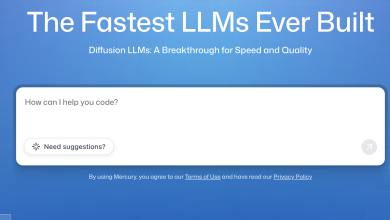Workplace demographics have shifted dramatically, with multiple generations working alongside each other, remote work normalizing, and employees expecting benefits that adapt to individual circumstances rather than one-size-fits-all programs. Salary packaging card options need to reflect this diversity by offering flexible choices that accommodate different lifestyles, career stages, and personal priorities. The rigid packaging programs of the past that only offered vehicle leases or basic expense accounts no longer meet the expectations of modern workers who want personalized benefits matching their actual needs and values.
Customizable Spending Categories
The most effective card programs let employees allocate their packaged amounts across multiple approved categories rather than forcing everyone into the same structure. One employee might split their package between technology purchases and professional development, while a colleague allocates everything to childcare costs, and another focuses entirely on transportation expenses. This flexibility ensures the benefit remains relevant across a diverse workforce. A tech startup’s employees have vastly different priorities than a healthcare facility’s staff, and even within a single organization, individual circumstances vary enormously. Programs offering choice see significantly higher participation rates because more employees find value that applies to their specific situation.
Integration with Remote Work Reality
Traditional packaging often assumed employees commuted to offices five days weekly, making vehicle leases and fuel cards the obvious choice. Remote and hybrid work arrangements change this calculation entirely. Someone working from home three days weekly might prefer packaging home office equipment, upgraded internet connections, or coworking space memberships instead of vehicle-related benefits. Forward-thinking card programs include categories for remote work expenses, acknowledging that modern work happens in coffee shops, home offices, and shared spaces as much as traditional workplaces. Employers offering this flexibility position themselves as understanding contemporary work reality rather than clinging to outdated assumptions.
Lifestyle and Wellness Inclusions
Younger employees especially value benefits supporting physical and mental health. Some progressive card programs now include gym memberships, fitness equipment, meditation app subscriptions, or wellness program participation. While FBT implications require careful structuring, the employee attraction and retention benefits often justify the complexity. A packaging program that helps someone afford regular exercise or mental health support demonstrates genuine care for wellbeing beyond just maximizing tax efficiency. These inclusions also align with workplace health initiatives, potentially reducing sick leave and improving overall productivity in ways that more than offset any additional administrative costs.
Graduated Options for Different Salary Levels
Entry-level employees earning $55,000 have different packaging capacity and priorities than senior staff earning $120,000. Effective programs offer tiered options matching what’s financially sensible at various income levels. Junior employees might access smaller packaged amounts focused on work essentials like laptops and professional memberships, while higher earners can package substantial amounts across multiple categories including vehicles, investment property expenses, or additional superannuation. This graduation ensures everyone can participate meaningfully rather than having options that only benefit high earners or are too limited to interest anyone.
Family-Focused Benefit Options
Parents face enormous expenses that salary packaging can significantly reduce. Childcare costs, school fees, and education-related expenses represent huge budget items that packaging converts to pre-tax spending. Modern card programs include family-specific categories acknowledging these priorities. An employee spending $25,000 annually on childcare who can package that expense saves $8,000-$11,000 depending on their tax bracket—life-changing money for young families. Employers supporting working parents through intelligent packaging options improve retention of valuable employees who might otherwise leave the workforce or reduce hours due to childcare cost pressures.
Technology and Learning Investments
Knowledge workers need current skills and up-to-date equipment. Packaging programs that include technology refreshes, online course subscriptions, conference attendance, or professional certification costs help employees stay current while reducing their personal financial burden. A software developer packaging a new laptop, development tool subscriptions, and conference tickets effectively gets 30-45% off these career-essential investments. Employers benefit from more skilled, engaged employees without directly funding every development opportunity. The card makes accessing these benefits simple—swipe to enroll in a course or purchase equipment rather than submitting expense claims and hoping for approval.
Environmental and Ethical Considerations
Some modern card programs let employees direct packaged amounts toward public transport passes, bicycle purchase schemes, or electric vehicle charging costs, supporting sustainability-focused workers. While these options require careful FBT structuring, they resonate strongly with employees who prioritize environmental responsibility. A packaging program that accommodates these values demonstrates corporate alignment with broader social concerns, improving employer brand among environmentally conscious talent. The same principle applies to ethical considerations—some programs let employees package charitable donations or volunteer time support, recognizing that modern workers care about their employer’s values and want benefits reflecting those priorities.




